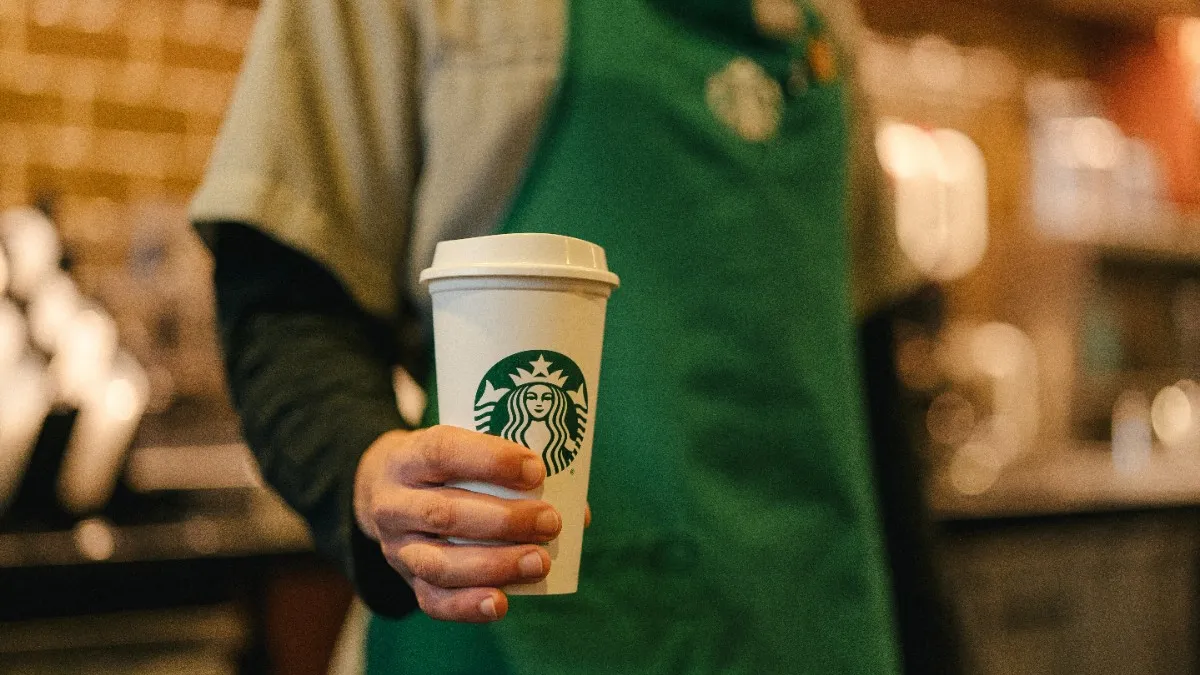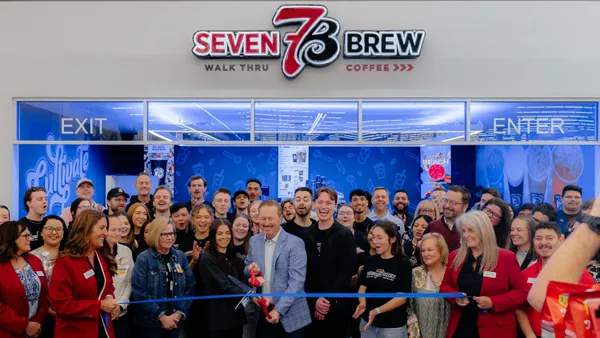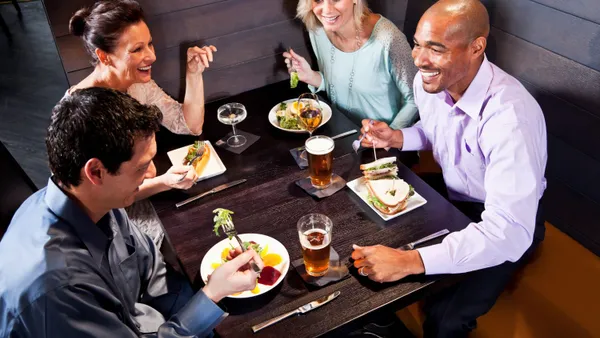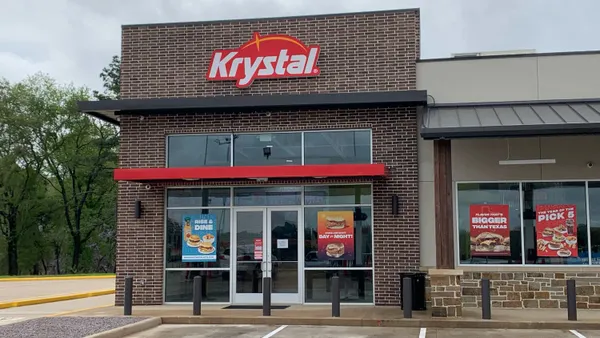Dive Brief:
- Beginning May 4, Starbucks will reopen many of its stores with modified operations and safety measures in place and intends to provide any healthy and well partners to come back to work, Rossann Williams, Starbucks EVP and President, U.S. and Canada, said in a Thursday letter to partners.
- The coffee chain will extend Service Pay through the end of May with an additional $3 per hour for anyone who is healthy and chooses to work and will extend its Catastrophe Pay for partners diagnosed or exposed to COVID-19 as well as partners experiencing childcare challenges through May, she said. Catastrophe Pay and Service Pay is expected to be phased out in June as normal operations return.
- Partners who have been designated by the CDC as higher risk for severe illness from COVID-19 or partners who live with healthcare workers are encouraged to reach out to their leaders to find a better circumstance for working, such as working in a lower risk environment like a delivery-only location or extending Catastrophe Pay through the end of May.
Dive Insight:
Starbucks CEO Kevin Johnson emphasized in a video to partners that reopening would be a community-by-community decision, not a national one, during a “monitor and adapt” phase, but a significant amount of Starbucks stores will reopen in May.
“We are ready for this new, dynamic period,” Johnson said in a letter to partners, “We are finding new, innovative ways to serve our communities safely while working hard to exceed public health requirements and adjust to new customer expectations.”
Prior to COVID-19, over 60% of Starbucks' store formats in the U.S. had a drive-thru and 80% of customer orders were on-the-go, he said. Although the chain has been a powerhouse when it comes to digital transactions and was on its way to having one of its strongest quarters in four years, it ended March with comp sales down 60% to 70%, so there is definitely an impetus to try and regain normal operations as soon as possible. And normal operations may not look like a typical Starbucks, either.
The coffee chain has also been testing a variety of service options in over 300 stores across the U.S. over the past few weeks, including contactless service, entryway pickup, curbside delivery and home delivery, he said. Store by store, Starbucks plans to modify its operations to drive-thru, delivery, mobile order and pickup and entryway handoff only, Williams said.
While the chain is ready to adapt to its changing situation, how its partners react will be an important indicator to watch. Employees petitioned the chain in mid-March to temporarily close its stores out of concern for their health and safety, and the chain closed its dining rooms on March 17, which was then extended through May 3.
The chain will continue to make accommodations for high-risk demographics and people with childcare issues, but won’t extend pay to people who are unwilling to work after May. They will have to use remaining vacation or sick leave, apply for unpaid leave or evaluate eligibility for assistance based on the CARES Act, Williams said.
With some partners ready to come back to work, others may just not be, she said.
“Others may be open to the idea but need a little more support which is why we will invest time the first week of May for retraining and re-immersing," Williams said. “And there will be some partners who just aren’t ready to return to a service role. So, we must show our genuine empathy for those who need to make the personal decision to leave Starbucks.”
Starbucks has been generous with benefits, pay and financial relief for partners, but the decision to cut employees off after May could be difficult for some even if Starbucks puts as many safety precautions in place as it can. Many chains, including Starbucks, McDonald’s and Chick-fil-A, have had employees test positive for coronavirus, so ongoing worries about safety while working are valid.














